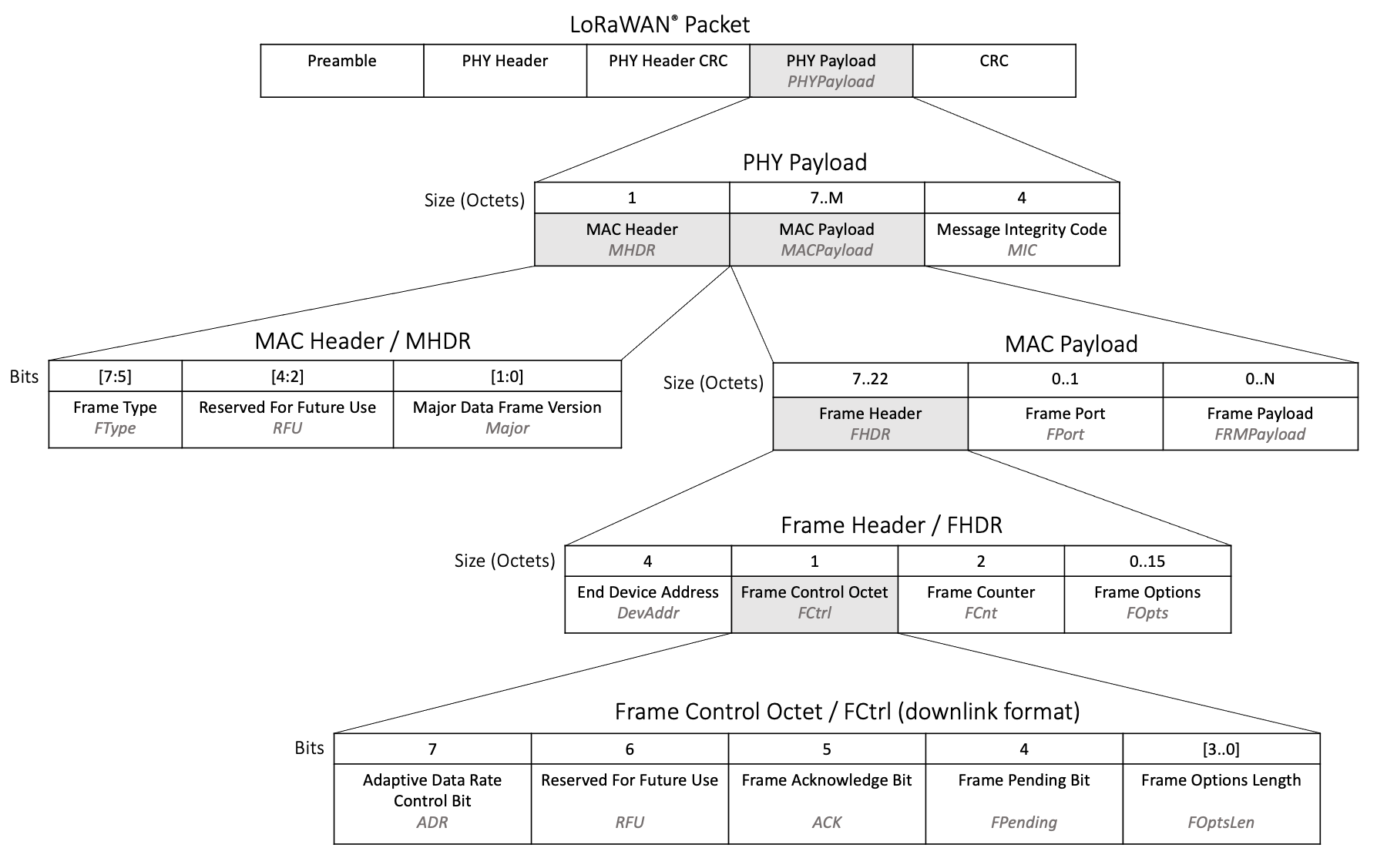3 - Receiving Messages
Messages sent from a network server to an end device are referred to as downlinks. These are sent to the end device via a single gateway. If there are multiple gateways near a device, the network server will select the most suitable gateway to broadcast from. This means the end device does not need to consider de-duping.
Devices operating in Class A mode only receive downlinks during the receive windows opened following an uplink, as described in the section Opening Receive Windows of the Sending Messages Book.
Devices that support Class B mode as well as Class A can receive additional downlinks in receive windows opened at fixed time slots. Read more about Class B mode in the Class B Book.
Devices that support Class C mode as well as Class A can receive additional downlinks at any time. Read more in the Class C: Continuously Listening for Downlinks book.
Todo
Fix link
In this book, you learn how to receive and handle downlink packets using the LoRaWAN® 1.0.4 specification.
Processing the Downlink Packet
A downlink message is sent in a LoRaWAN® downlink packet. The LoRaWAN Packet shown in Figure 1 contains a PHY Payload (PHYPayload) which contains three top-level groups of fields:
-
a MAC Header (MHDR) defining information about the type of message and its format version
-
a MAC Payload (MACPayload) containing the information being transmitted
-
a Message Integrity Code (MIC) used by the end device to verify the message was received from the same network server the device joined

Figure 1: Fields contained in a LoRaWAN downlink packet
When the end device receives a downlink packet, the following steps must be worked through to interpret the message and obtain the data within.